Secure by default: recommendations from the CISA’s newest guide, and how Cloudflare follows these principles to keep you secure

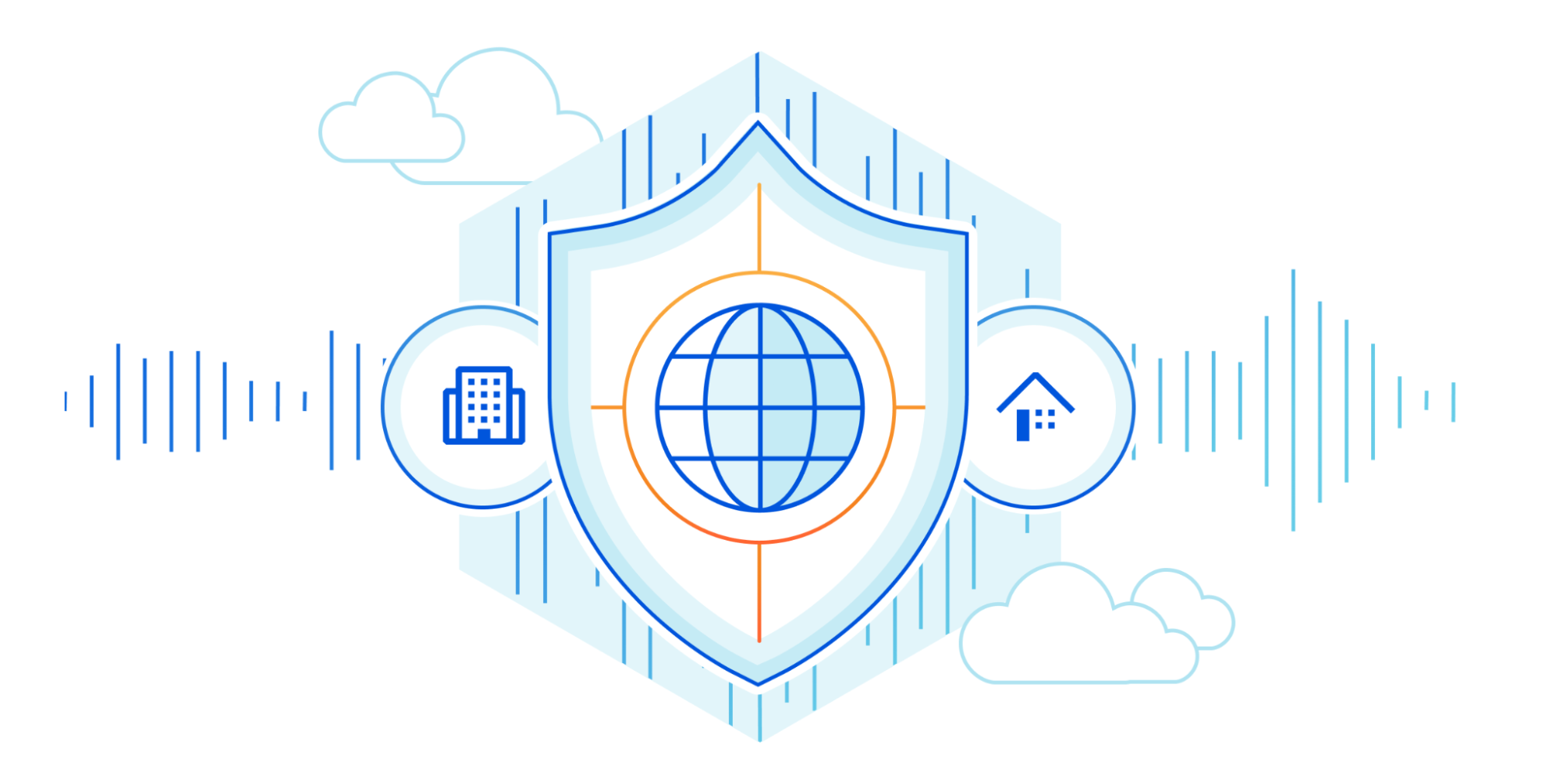
When you buy a new house, you shouldn’t have to worry that everyone in the city can unlock your front door with a universal key before you change the lock. You also shouldn’t have to walk around the house with a screwdriver and tighten the window locks and back door so that intruders can’t pry them open. And you really shouldn’t have to take your alarm system offline every few months to apply critical software updates that the alarm vendor could have fixed with better software practices before they installed it.
Similarly, you shouldn’t have to worry that when you buy a network discovery tool it can be accessed by any attacker until you change the password, or that your expensive hardware-based firewalls can be recruited to launch DDoS attacks or run arbitrary code without the need to authenticate.
This “default secure” posture is the focus of a recently published guide jointly authored by the Cybersecurity and Infrastructure Agency (CISA), NSA, FBI, and six other international agencies representing the United Kingdom, Australia, Canada, Germany, Netherlands, and New Zealand. In the guide, the authors implore technology vendors to follow Secure-by-Design and Secure-by-Default principles, shifting the burden of security as much Continue reading
Oxy: Fish/Bumblebee/Splicer subsystems to improve reliability


At Cloudflare, we are building proxy applications on top of Oxy that must be able to handle a huge amount of traffic. Besides high performance requirements, the applications must also be resilient against crashes or reloads. As the framework evolves, the complexity also increases. While migrating WARP to support soft-unicast (Cloudflare servers don't own IPs anymore), we needed to add different functionalities to our proxy framework. Those additions increased not only the code size but also resource usage and states required to be preserved between process upgrades.
To address those issues, we opted to split a big proxy process into smaller, specialized services. Following the Unix philosophy, each service should have a single responsibility, and it must do it well. In this blog post, we will talk about how our proxy interacts with three different services - Splicer (which pipes data between sockets), Bumblebee (which upgrades an IP flow to a TCP socket), and Fish (which handles layer 3 egress using soft-unicast IPs). Those three services help us to improve system reliability and efficiency as we migrated WARP to support soft-unicast.
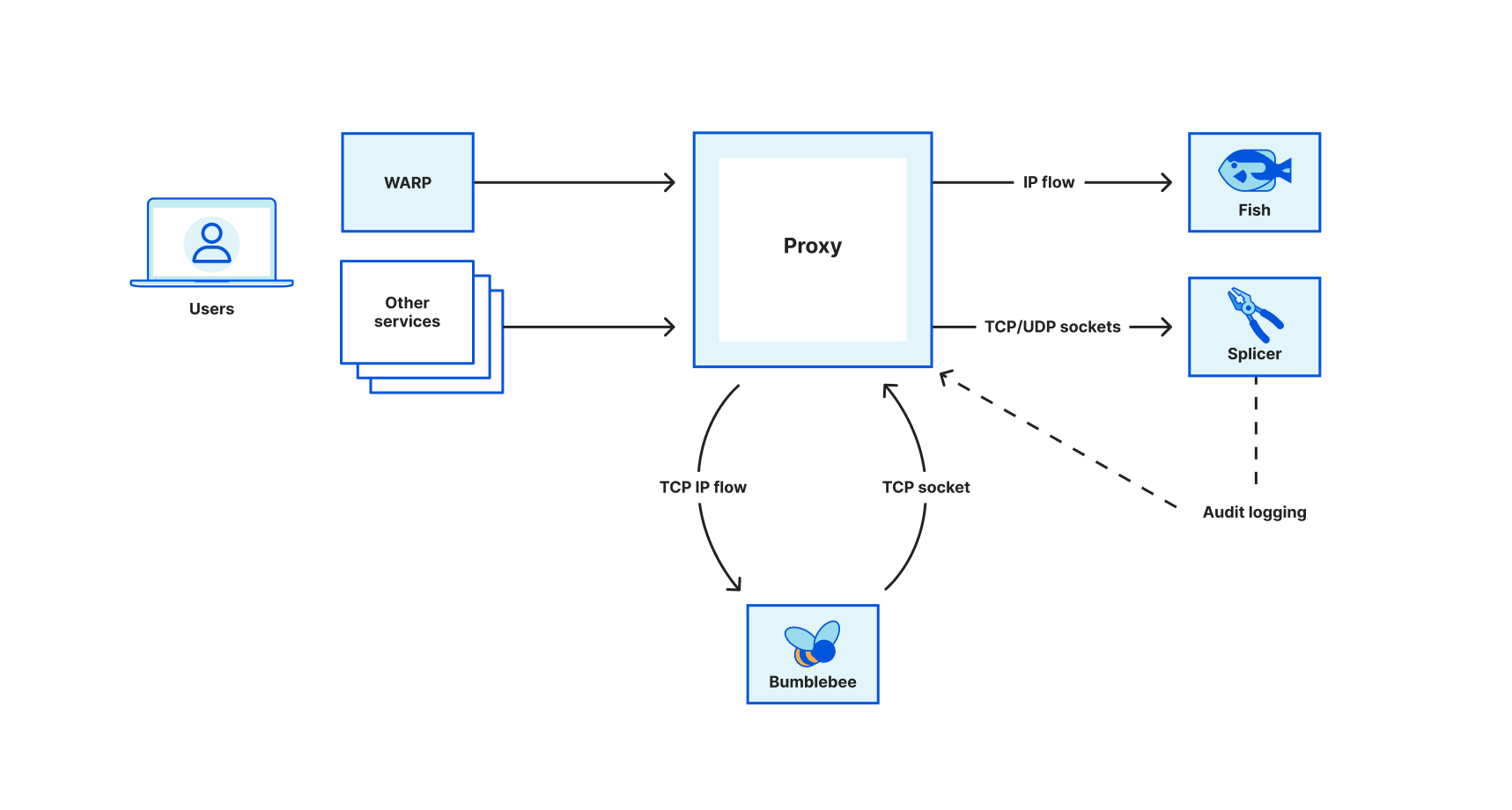
Splicer
Most transmission tunnels in our proxy forward packets without making any modifications. In other words, given Continue reading
DDR4 memory organization and how it affects memory bandwidth
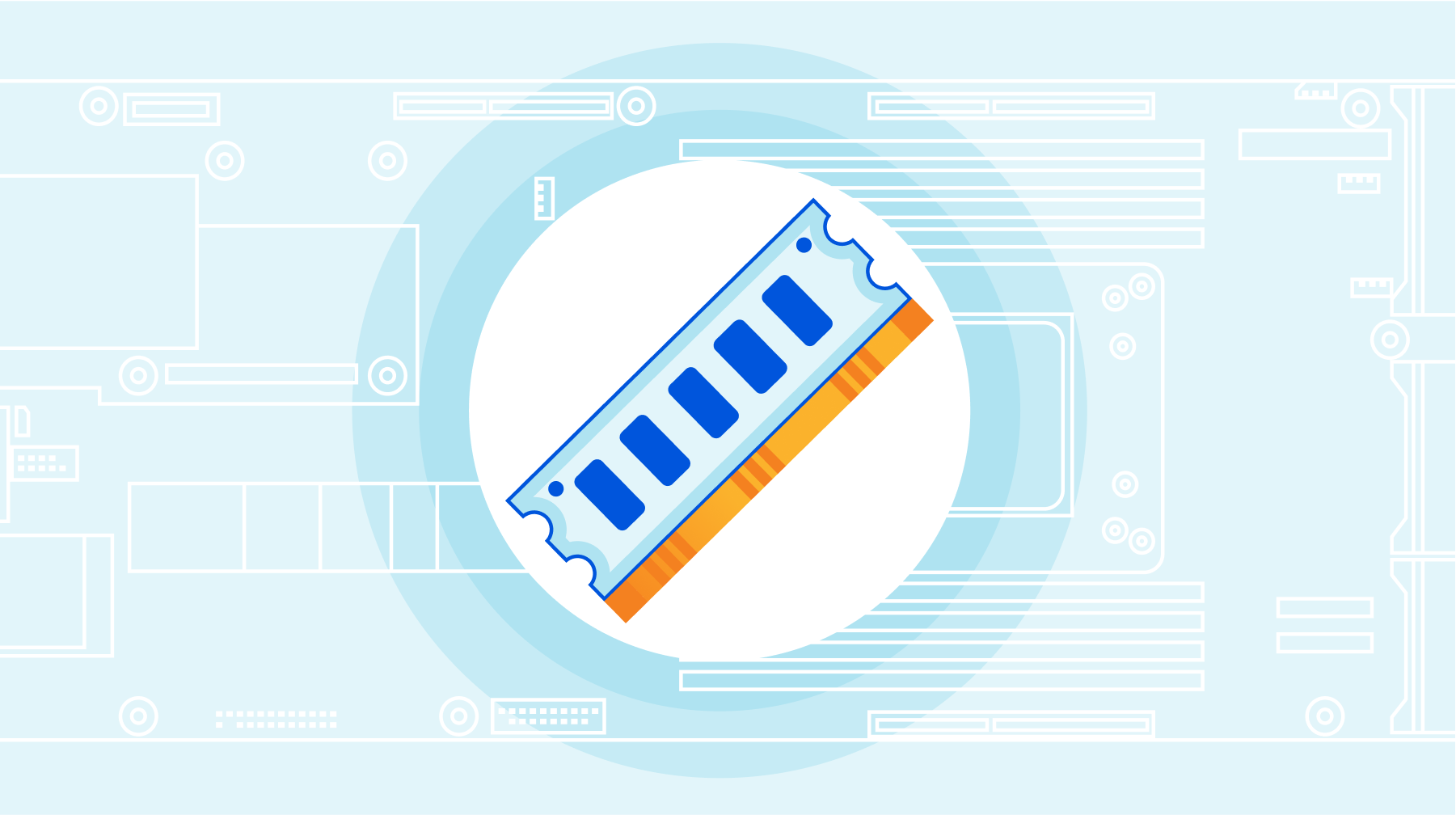
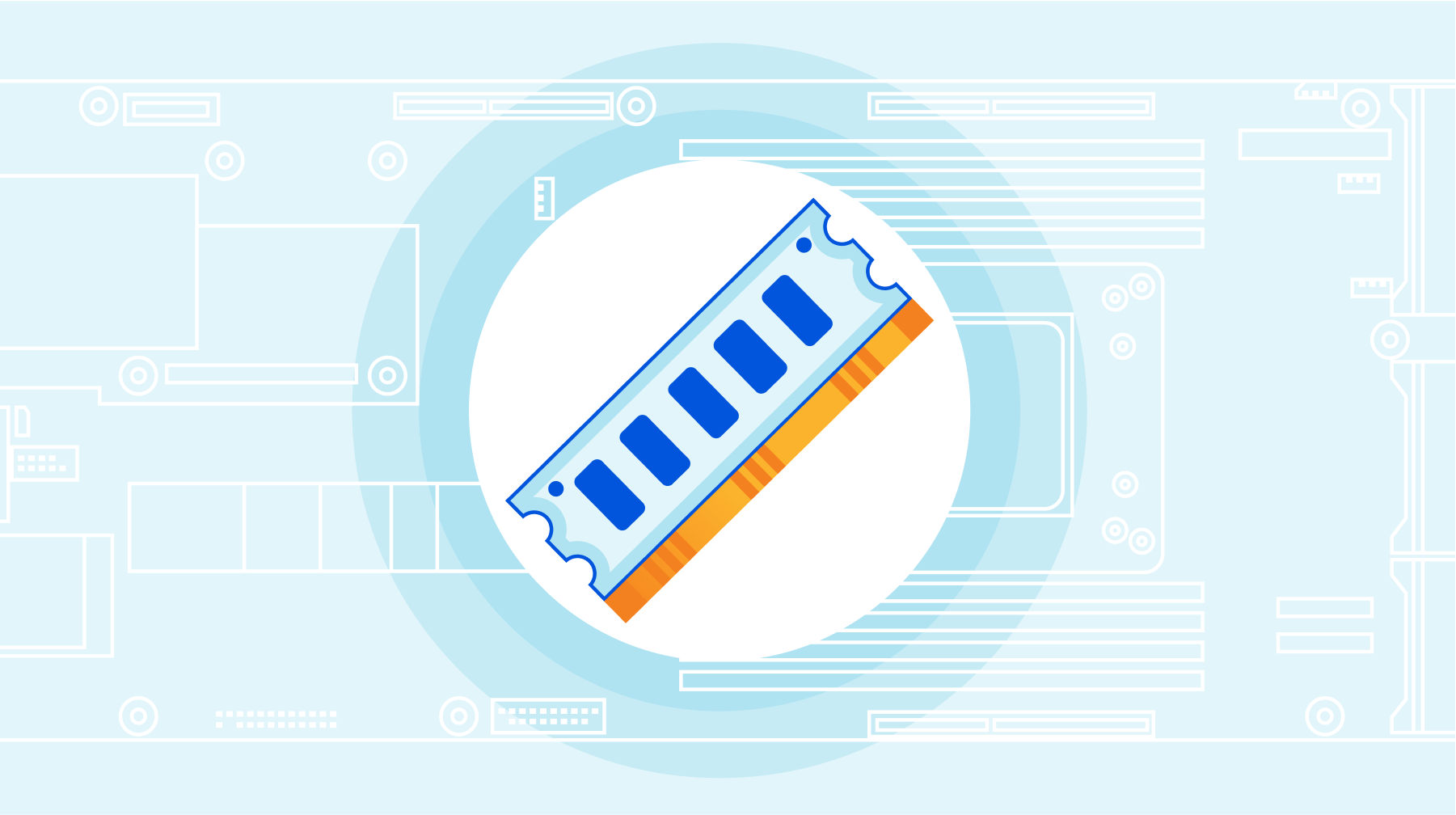
When shopping for DDR4 memory modules, we typically look at the memory density and memory speed. For example a 32GB DDR4-2666 memory module has 32GB of memory density, and the data rate transfer speed is 2666 mega transfers per second (MT/s).
If we take a closer look at the selection of DDR4 memories, we will then notice that there are several other parameters to choose from. One of them is rank x organization, for example 1Rx8, 2Rx4, 2Rx8 and so on. What are these and does memory module rank and organization have an effect on DDR4 module performance?
In this blog, we will study the concepts of memory rank and organization, and how memory rank and organization affect the memory bandwidth performance by reviewing some benchmarking test results.
Memory rank
Memory rank is a term that is used to describe how many sets of DRAM chips, or devices, exist on a memory module. A set of DDR4 DRAM chips is always 64-bit wide, or 72-bit wide if ECC is supported. Within a memory rank, all chips share the address, command and control signals.
The concept of memory rank is very similar to memory bank. Memory rank is a term used Continue reading
Consent management made easy and clear with Cloudflare Zaraz


Depending on where you live you may be asked to agree to the use of cookies when visiting a website for the first time. And if you've ever clicked something other than Approve you'll have noticed that the list of choices about which services should or should not be allowed to use cookies can be very, very long. That's because websites typically incorporate numerous third party tools for tracking, A/B testing, retargeting, etc. – and your consent is needed for each one of them.
For website owners it's really hard to keep track of which third party tools are used and whether they've asked end users about all of them. There are tools that help you load third-party scripts on your website, and there are tools that help you manage and gather consent. Making the former respect the choices made in the latter is often cumbersome, to say the least.
This changes with Cloudflare Zaraz, a solution that makes third-party tools secure and fast, and that now can also help you with gathering and managing consent. Using the Zaraz Consent Manager, you can easily collect users’ consent preferences on your website, using a consent modal, and apply your consent policy Continue reading
Measuring network quality to better understand the end-user experience

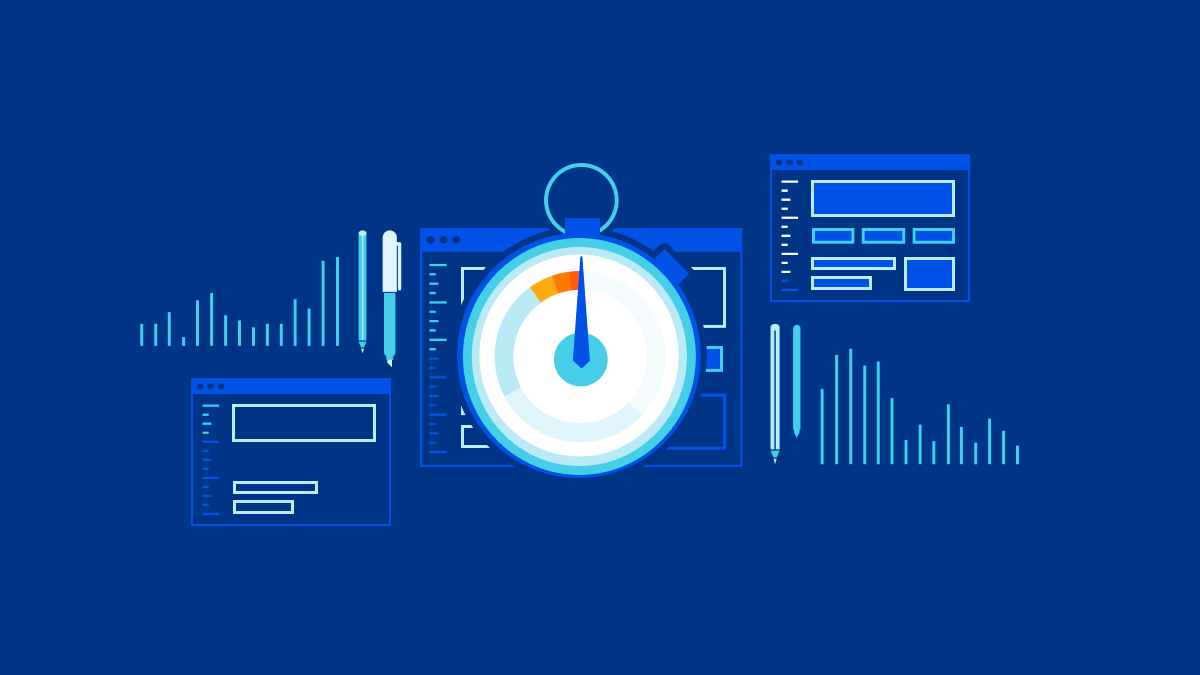
You’re visiting your family for the holidays and you connect to the WiFi, and then notice Netflix isn’t loading as fast as it normally does. You go to speed.cloudflare.com, fast.com, speedtest.net, or type “speed test” into Google Chrome to figure out if there is a problem with your Internet connection, and get something that looks like this:

If you want to see what that looks like for you, try it yourself here. But what do those numbers mean? How do those numbers relate to whether or not your Netflix isn’t loading or any of the other common use cases: playing games or audio/video chat with your friends and loved ones? Even network engineers find that speed tests are difficult to relate to the user experience of… using the Internet..
Amazingly, speed tests have barely changed in nearly two decades, even though the way we use the Internet has changed a lot. With so many more people on the Internet, the gaps between speed tests and the user’s experience of network quality are growing. The problem is so important that the Internet’s standards organization is paying attention, too.
From a high-level, there are three grand network Continue reading
Making home Internet faster has little to do with “speed”


More than ten years ago, researchers at Google published a paper with the seemingly heretical title “More Bandwidth Doesn’t Matter (much)”. We published our own blog showing it is faster to fly 1TB of data from San Francisco to London than it is to upload it on a 100 Mbps connection. Unfortunately, things haven’t changed much. When you make purchasing decisions about home Internet plans, you probably consider the bandwidth of the connection when evaluating Internet performance. More bandwidth is faster speed, or so the marketing goes. In this post, we’ll use real-world data to show both bandwidth and – spoiler alert! – latency impact the speed of an Internet connection. By the end, we think you’ll understand why Cloudflare is so laser focused on reducing latency everywhere we can find it.
First, we should quickly define bandwidth and latency. Bandwidth is the amount of data that can be transmitted at any single time. It’s the maximum throughput, or capacity, of the communications link between two servers that want to exchange data. Usually, the bottleneck – the place in the network where the connection is constrained by the amount of bandwidth available – is in the “last mile”, either the Continue reading
Cloudflare One named in Gartner® Magic Quadrant™ for Security Service Edge


Gartner has recognized Cloudflare in the 2023 “Gartner® Magic Quadrant™ for Security Service Edge (SSE)” report for its ability to execute and completeness of vision. We are excited to share that the Cloudflare Zero Trust solution, part of our Cloudflare One platform, is one of only ten vendors recognized in the report.
Of the 10 companies named to this year’s Gartner® Magic Quadrant™ report, Cloudflare is the only new vendor addition. You can read more about our position in the report and what customers say about using Cloudflare One here.
Cloudflare is also the newest vendor when measured by the date since our first products in the SSE space launched. We launched Cloudflare Access, our best-in-class Zero Trust access control product, a little less than five years ago. Since then, we have released hundreds of features and shipped nearly a dozen more products to create a comprehensive SSE solution that over 10,000 organizations trust to keep their organizations data, devices and teams both safe and fast. We moved that quickly because we built Cloudflare One on top of the same network that already secures and accelerates large segments of the Internet today.
We deliver our SSE services on the Continue reading
Introducing Cloudflare’s new Network Analytics dashboard


We’re pleased to introduce Cloudflare’s new and improved Network Analytics dashboard. It’s now available to Magic Transit and Spectrum customers on the Enterprise plan.
The dashboard provides network operators better visibility into traffic behavior, firewall events, and DDoS attacks as observed across Cloudflare’s global network. Some of the dashboard’s data points include:
- Top traffic and attack attributes
- Visibility into DDoS mitigations and Magic Firewall events
- Detailed packet samples including full packets headers and metadata
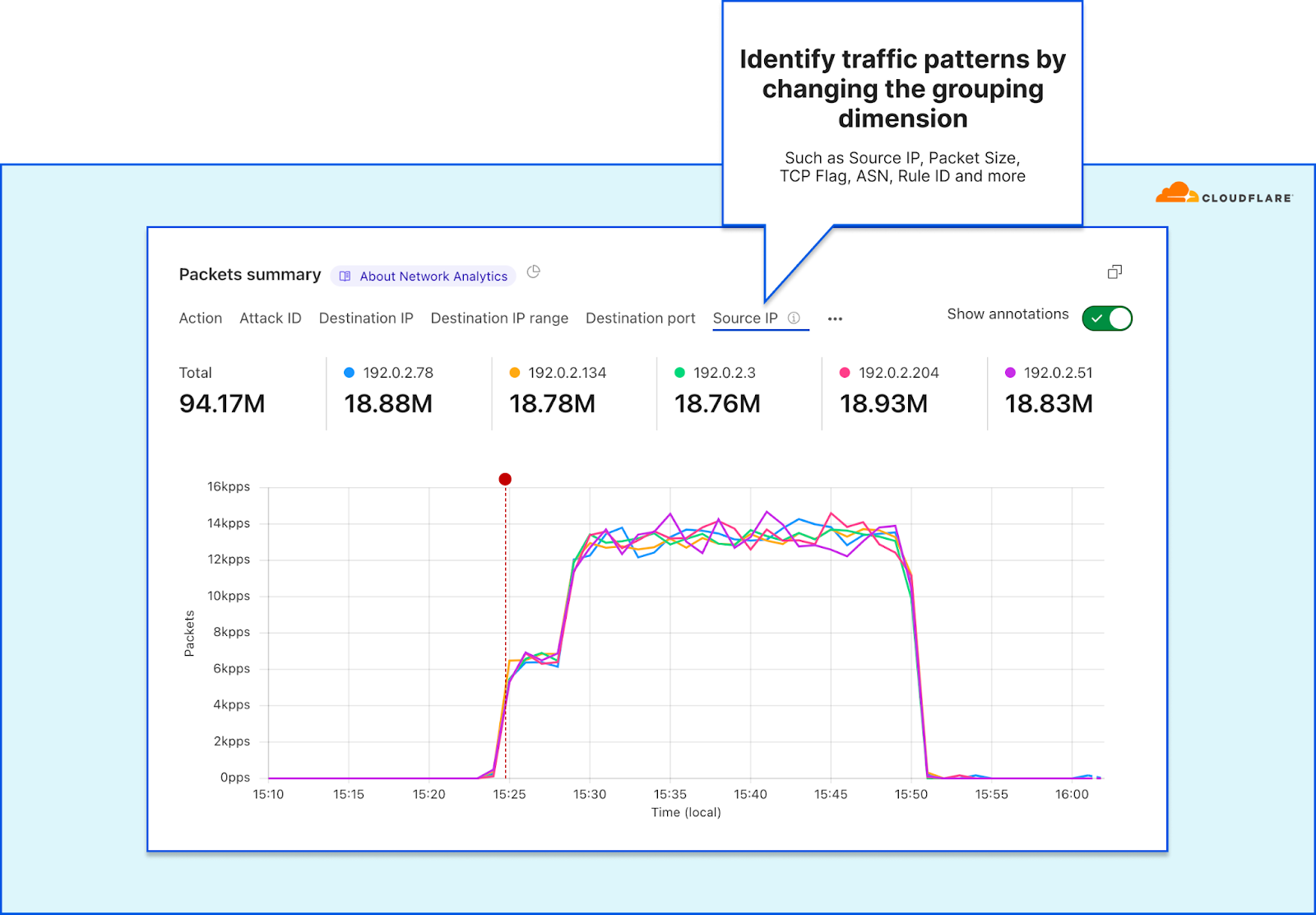
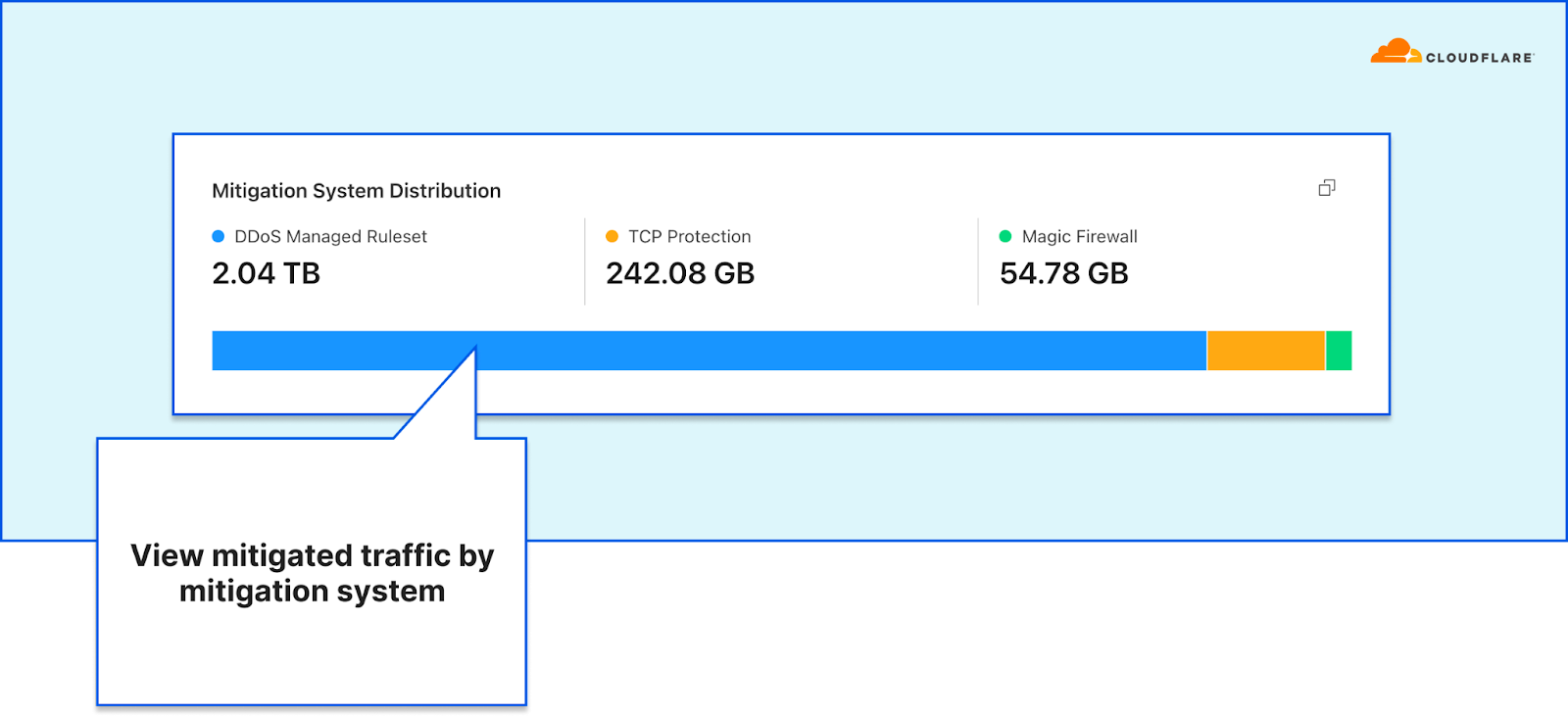
This dashboard was the outcome of a full refactoring of our network-layer data logging pipeline. The new data pipeline is decentralized and much more flexible than the previous one — making it more resilient, performant, and scalable for when we add new mitigation systems, introduce new sampling points, and roll out new services. A technical deep-dive blog is coming soon, so stay tuned.
In this blog post, we will demonstrate how the dashboard helps network operators:
- Understand their network better
- Respond to DDoS attacks faster
- Easily generate security reports for peers and managers
Understand your network better
One of the main responsibilities network operators bare is ensuring the operational stability Continue reading
Internet disruptions overview for Q1 2023


Cloudflare operates in more than 285 cities in over 100 countries, where we interconnect with over 11,500 network providers in order to provide a broad range of services to millions of customers. The breadth of both our network and our customer base provides us with a unique perspective on Internet resilience, enabling us to observe the impact of Internet disruptions.
We entered 2023 with Internet disruptions due to causes that ran the gamut, including several government-directed Internet shutdowns, cyclones, a massive earthquake, power outages, cable cuts, cyberattacks, technical problems, and military action. As we have noted in the past, this post is intended as a summary overview of observed disruptions, and is not an exhaustive or complete list of issues that have occurred during the quarter.
Government directed
Iran
Over the last six-plus months, government-directed Internet shutdowns in Iran have largely been in response to protests over the death of Mahsa Amini while in police custody. While these shutdowns are still occurring in a limited fashion, a notable shutdown observed in January was intended to prevent cheating on academic exams. Internet shutdowns with a similar purpose have been observed across a number of other countries, and have also occurred in Continue reading
DDoS threat report for 2023 Q1


Welcome to the first DDoS threat report of 2023. DDoS attacks, or distributed denial-of-service attacks, are a type of cyber attack that aim to overwhelm Internet services such as websites with more traffic than they can handle, in order to disrupt them and make them unavailable to legitimate users. In this report, we cover the latest insights and trends about the DDoS attack landscape as we observed across our global network.
Kicking off 2023 with a bang
Threat actors kicked off 2023 with a bang. The start of the year was characterized by a series of hacktivist campaigns against Western targets including banking, airports, healthcare and universities — mainly by the pro-Russian Telegram-organized groups Killnet and more recently by AnonymousSudan.
While Killnet-led and AnonymousSudan-led cyberattacks stole the spotlight, we haven’t witnessed any novel or exceedingly large attacks by them.
Hyper-volumetric attacks
We did see, however, an increase of hyper-volumetric DDoS attacks launched by other threat actors — with the largest one peaking above 71 million requests per second (rps) — exceeding Google’s previous world record of 46M rps by 55%.
Back to Killnet and AnonymousSudan, while no noteworthy attacks were reported, we shouldn't underestimate the potential risks. Unprotected Internet Continue reading
Protect your domain with Zone Holds
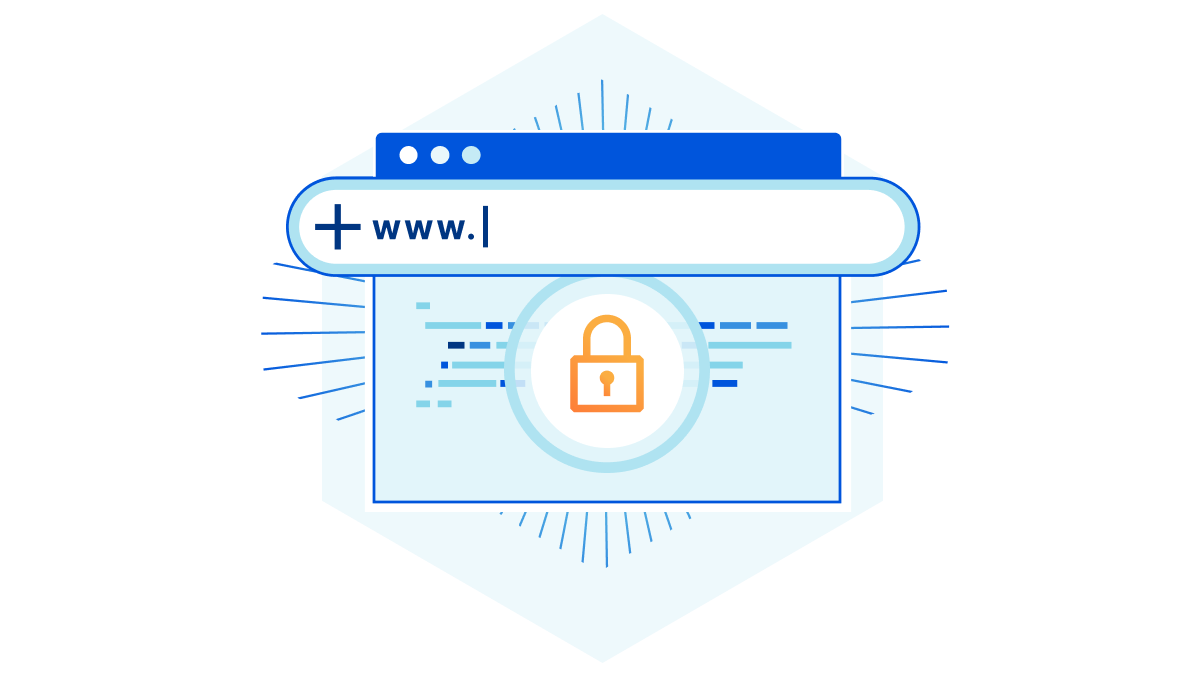
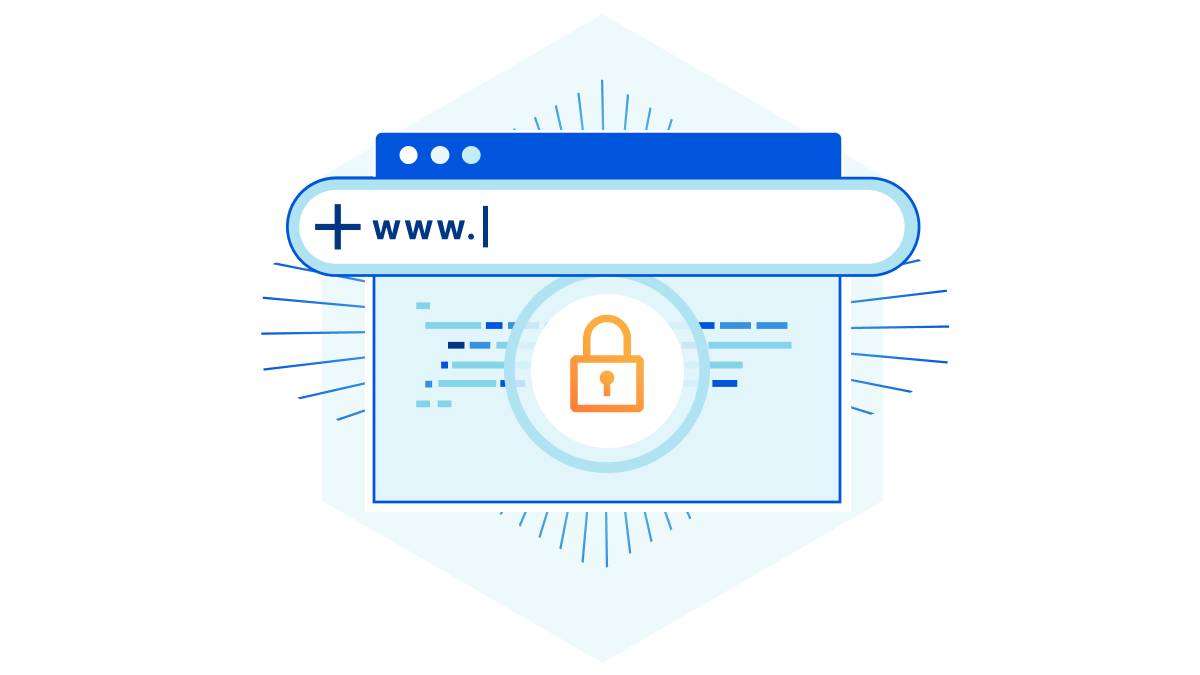
Today, we are announcing Zone Holds, a new capability for enterprise customers that gives them control of if and when someone else can add the same zone to another Cloudflare account. When multiple teams at a company want to use Cloudflare, one team might accidentally step on another’s toes and try to manage the same zone in two accounts. Zone Holds ensure that this cannot happen by enforcing that only one account can contain a given domain, optionally inclusive of subdomains or custom hostnames, unless explicit permission is granted by the account owner of the zone.
What can go wrong today
Cloudflare already requires zones to be authenticated via DNS before traffic is proxied through our global network. This ensures that only domain owners can authorize traffic to be sent through and controlled with Cloudflare. However, many of our customers are large organizations with many teams all trying to protect and accelerate their web properties. In these cases, one team may not realize that a given domain is already being protected with Cloudflare. If they activate a second instance of the same domain in Cloudflare, they end up replacing the original zone that another team was already managing with Cloudflare. Continue reading
Cloudflare’s view of the Virgin Media outage in the UK
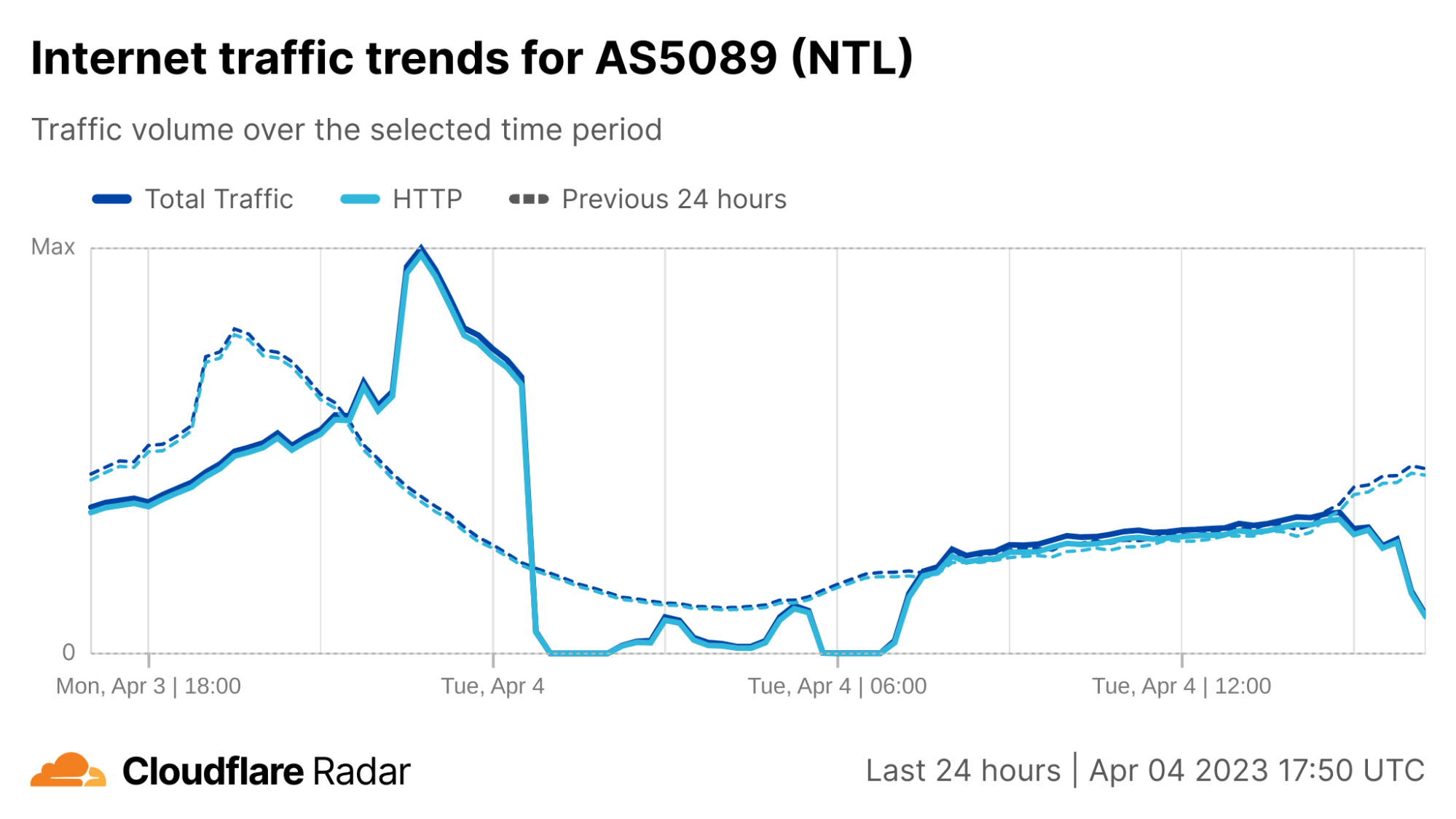
Just after midnight (UTC) on April 4, subscribers to UK ISP Virgin Media (AS5089) began experiencing an Internet outage, with subscriber complaints multiplying rapidly on platforms including Twitter and Reddit.
Cloudflare Radar data shows Virgin Media traffic dropping to near-zero around 00:30 UTC, as seen in the figure below. Connectivity showed some signs of recovery around 02:30 UTC, but fell again an hour later. Further nominal recovery was seen around 04:45 UTC, before again experiencing another complete outage between around 05:45-06:45 UTC, after which traffic began to recover, reaching expected levels around 07:30 UTC.
After the initial set of early-morning disruptions, Virgin Media experienced another round of issues in the afternoon. Cloudflare observed instability in traffic from Virgin Media’s network (called an autonomous system in Internet jargon) AS5089 starting around 15:00 UTC, with a significant drop just before 16:00 UTC. However in this case, it did not appear to be a complete outage, with traffic recovering approximately a half hour later.
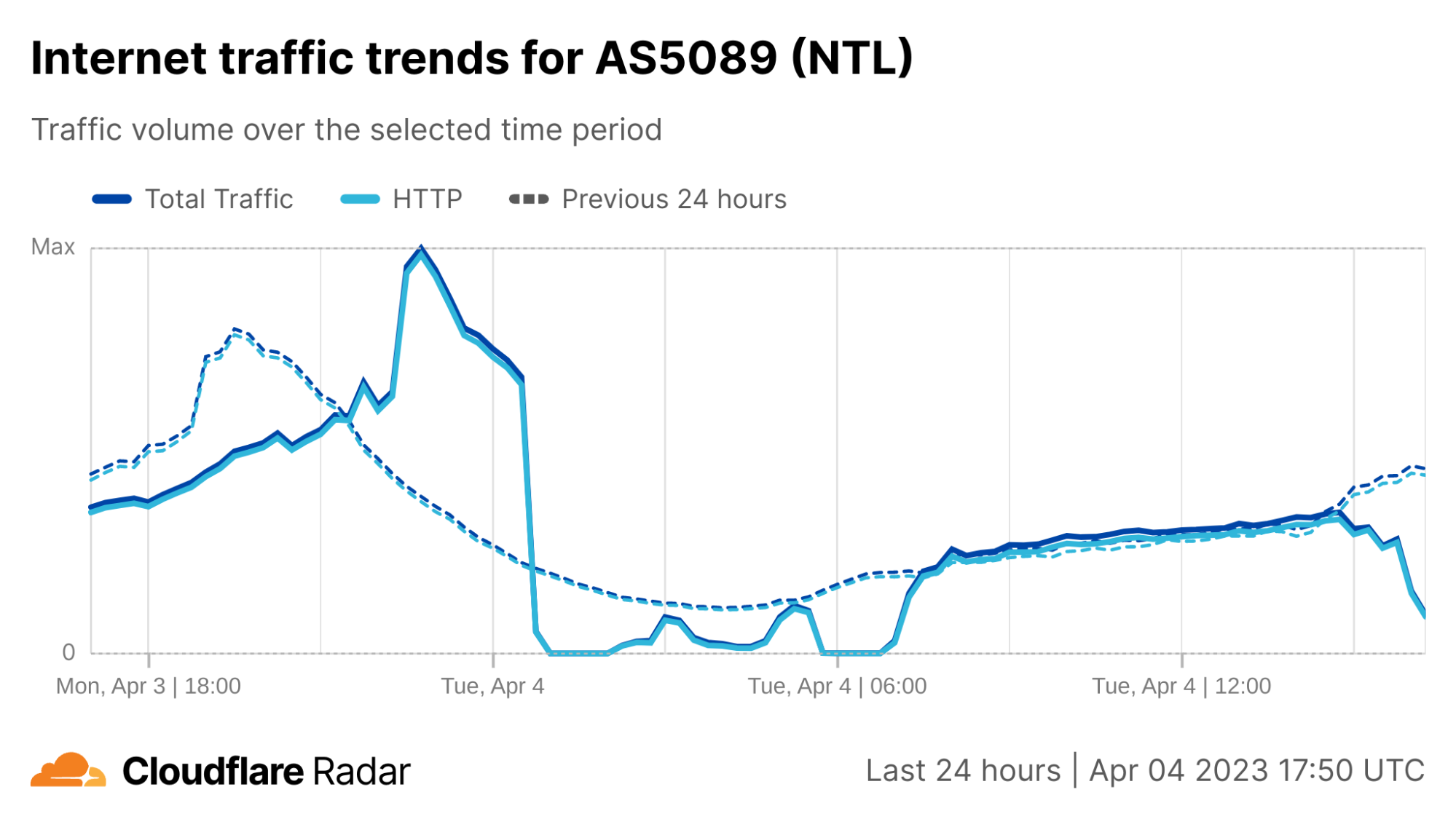
Virgin Media’s Twitter account acknowledged the early morning disruption several hours after it began, posting responses stating “We’re aware of an issue that is affecting broadband services for Virgin Media customers as well as our contact centres. Our teams Continue reading
Oxy: the journey of graceful restarts


Any software under continuous development and improvement will eventually need a new version deployed to the systems running it. This can happen in several ways, depending on how much you care about things like reliability, availability, and correctness. When I started out in web development, I didn’t think about any of these qualities; I simply blasted my new code over FTP directly to my /cgi-bin/ directory, which was the style at the time. For those of us producing desktop software, often you sidestep this entirely by having the user save their work, close the program and install an update – but they usually get to decide when this happens.
At Cloudflare we have to take this seriously. Our software is in constant use and cannot simply be stopped abruptly. A dropped HTTP request can cause an entire webpage to load incorrectly, and a broken connection can kick you out of a video call. Taking away reliability creates a vacuum filled only by user frustration.
The limitations of the typical upgrade process
There is no one right way to upgrade software reliably. Some programming languages and environments make it easier than others, but in a Turing-complete language few things are impossible.
mTLS client certificate revocation vulnerability with TLS Session Resumption
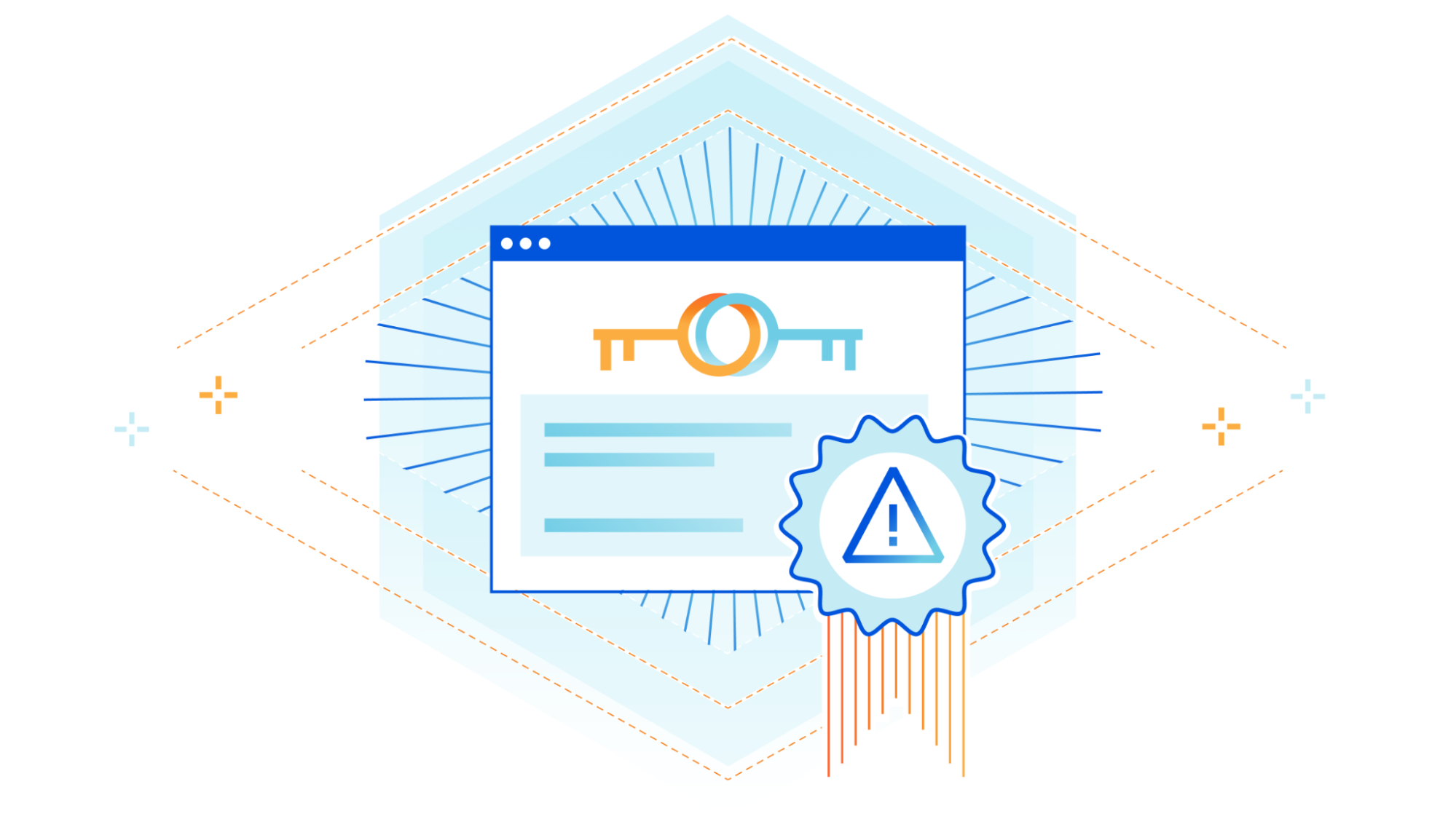

On December 16, 2022, Cloudflare discovered a bug where, in limited circumstances, some users with revoked certificates may not have been blocked by Cloudflare firewall settings. Specifically, Cloudflare’s Firewall Rules solution did not block some users with revoked certificates from resuming a session via mutual transport layer security (mTLS), even if the customer had configured Firewall Rules to do so. This bug has been mitigated, and we have no evidence of this being exploited. We notified any customers that may have been impacted in an abundance of caution, so they can check their own logs to determine if an mTLS protected resource was accessed by entities holding a revoked certificate.
What happened?
One of Cloudflare Firewall Rules’ features, introduced in March 2021, lets customers revoke or block a client certificate, preventing it from being used to authenticate and establish a session. For example, a customer may use Firewall Rules to protect a service by requiring clients to provide a client certificate through the mTLS authentication protocol. Customers could also revoke or disable a client certificate, after which it would no longer be able to be used to authenticate a party initiating an encrypted session via mTLS.
When Cloudflare receives Continue reading
Introducing Rollbacks for Workers Deployments
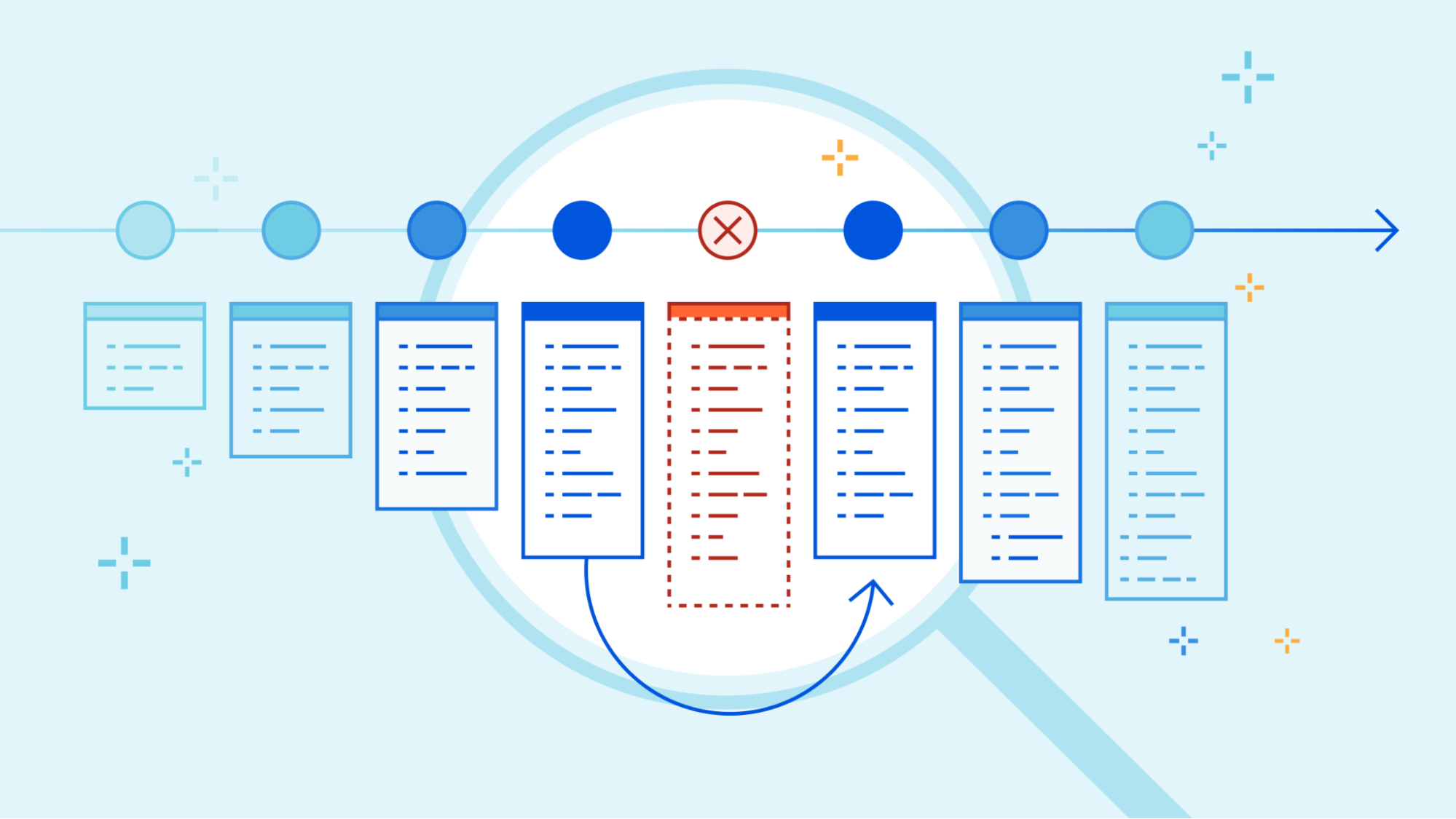

In November, 2022, we introduced deployments for Workers. Deployments are created as you make changes to a Worker. Each one is unique. These let you track changes to your Workers over time, seeing who made the changes, and where they came from.

When we made the announcement, we also said our intention was to build more functionality on top of deployments.
Today, we’re proud to release rollbacks for deployments.
Rollbacks
As nice as it would be to know that every deployment is perfect, it’s not always possible - for various reasons. Rollbacks provide a quick way to deploy past versions of a Worker - providing another layer of confidence when developing and deploying with Workers.
Via the dashboard
In the dashboard, you can navigate to the Deployments tab. For each deployment that’s not the most recent, you should see a new icon on the far right of the deployment. Hovering over that icon will display the option to rollback to the specified deployment.

Clicking on that will bring up a confirmation dialog, where you can enter a reason for rollback. This provides another mechanism of record-keeping and helps give more context for why the rollback was necessary.

Once you enter Continue reading
Upgrading one of the oldest components in Cloudflare’s software stack


Cloudflare serves a huge amount of traffic: 45 million HTTP requests per second on average (as of 2023; 61 million at peak) from more than 285 cities in over 100 countries. What inevitably happens with that kind of scale is that software will be pushed to its limits. As we grew, one of the problems we faced was related to deploying our code. Sometimes, a release would be delayed because of inadequate hardware resources on our servers. Buying more and more hardware is expensive and there are limits to e.g. how much memory we can realistically have on a server. In this article, we explain how we optimised our software and its release process so that no additional resources are needed.
In order to handle traffic, each of our servers runs a set of specialised proxies. Historically, they were based on NGINX, but increasingly they include services created in Rust. Out of our proxy applications, FL (Front Line) is the oldest and still has a broad set of responsibilities.
At its core, it’s one of the last uses of NGINX at Cloudflare. It contains a large amount of business logic that runs many Cloudflare products, using a variety of Continue reading
From IP packets to HTTP: the many faces of our Oxy framework
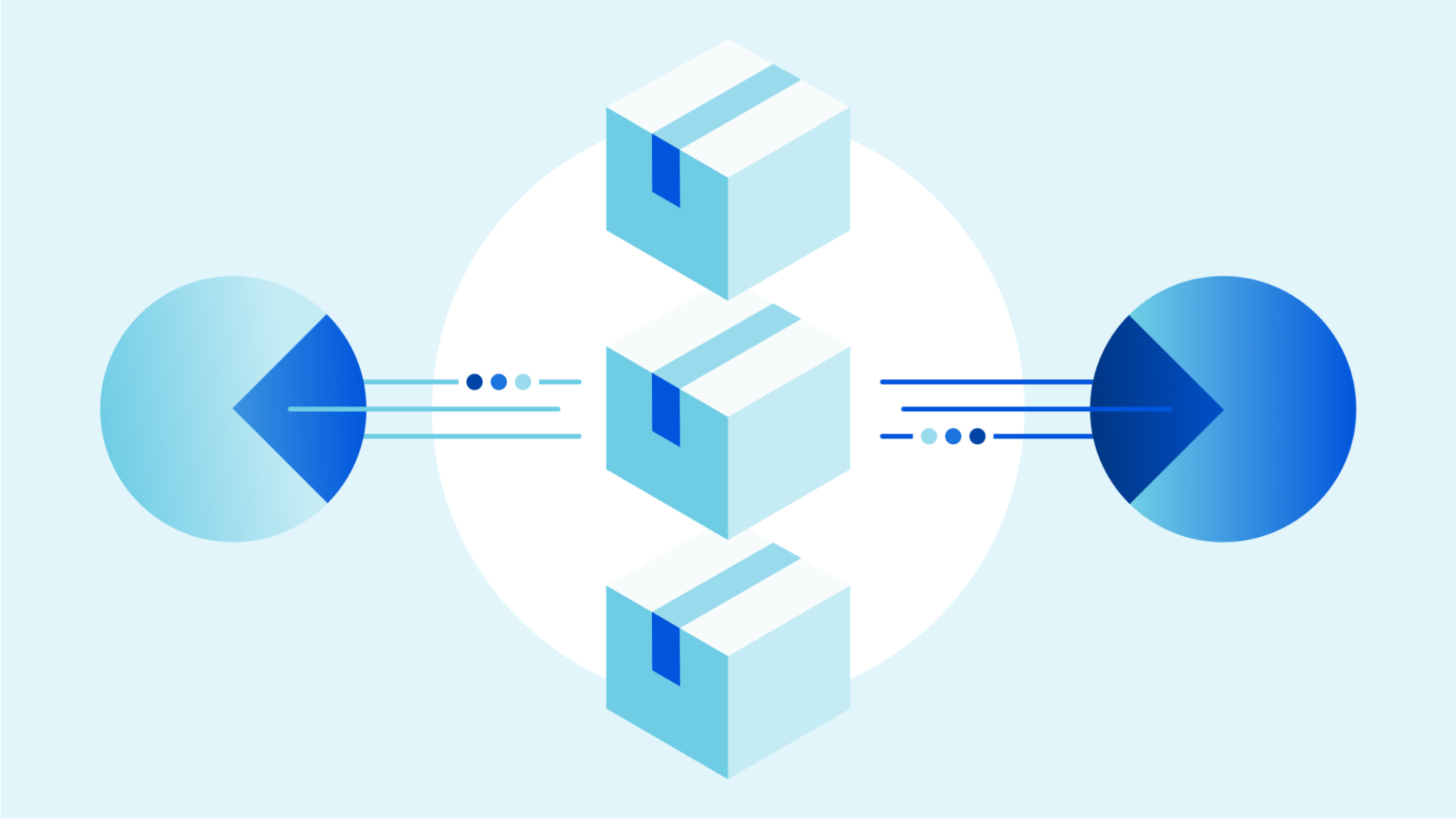
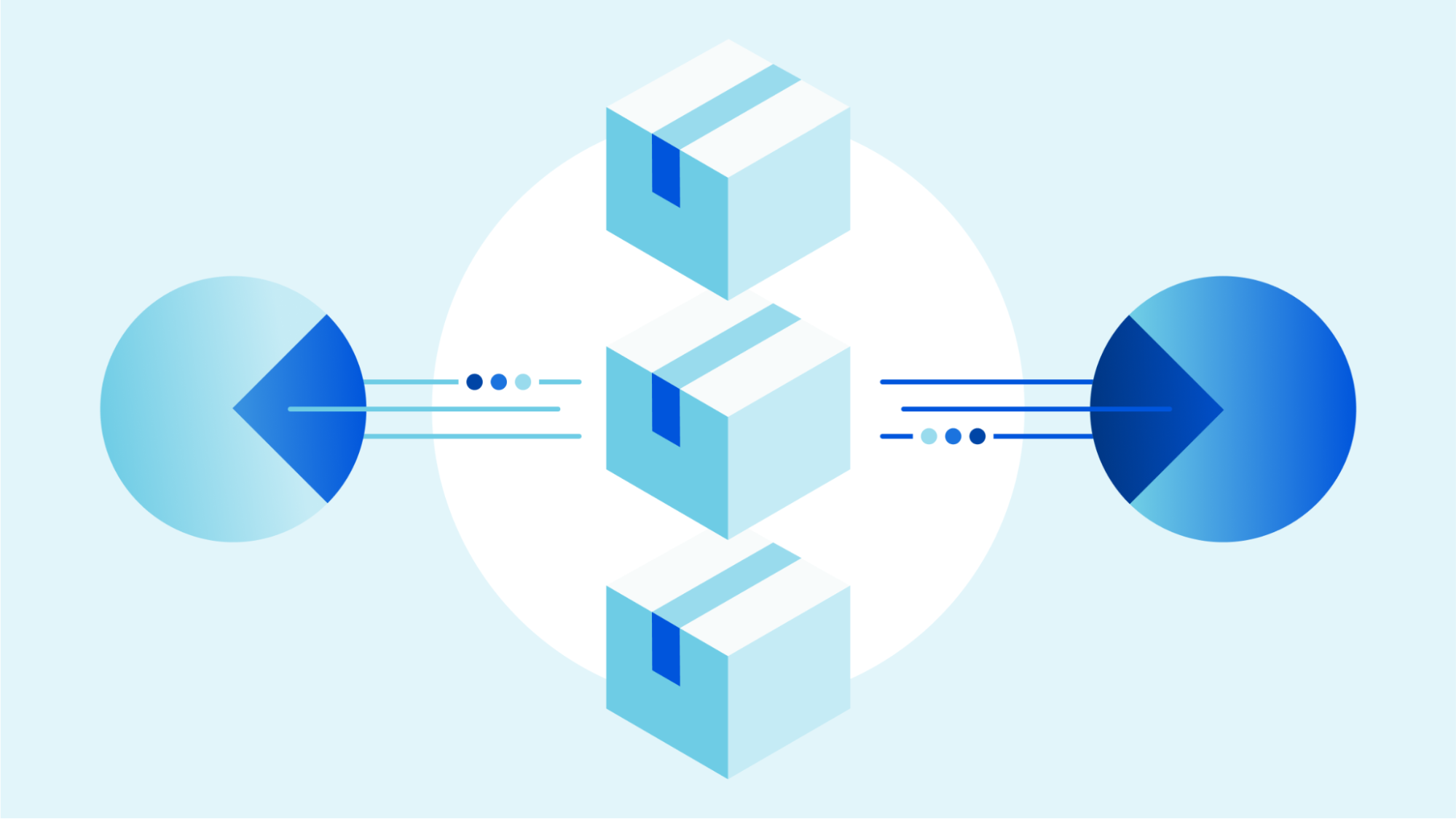
We have recently introduced Oxy, our Rust-based framework for proxies powering many Cloudflare services and products. Today, we will explain why and how it spans various layers of the OSI model, by handling directly raw IP packets, TCP connections and UDP payloads, all the way up to application protocols such as HTTP and SSH.
On-ramping IP packets
An application built on top of Oxy defines — in a configuration file — the on-ramps that will accept ingress traffic to be proxied to some off-ramp. One of the possibilities is to on-ramp raw IP packets. But why operate at that layer?
The answer is: to power Cloudflare One, our network offering for customers to extend their private networks — such as offices, data centers, cloud networks and roaming users — with the Cloudflare global network. Such private networks operate based on Zero Trust principles, which means every access is authenticated and authorized, contrasting with legacy approaches where you can reach every private service after authenticating once with the Virtual Private Network.
To effectively extend our customer’s private network into ours, we need to support arbitrary protocols that rely on the Internet Protocol (IP). Hence, we on-ramp Cloudflare Continue reading
Helping protect personal information in the cloud, all across the world


Cloudflare has achieved a new EU Cloud Code of Conduct privacy validation, demonstrating GDPR compliance to strengthen trust in cloud services
Internet privacy laws around the globe differ, and in recent years there’s been much written about cross-border data transfers. Many regulations require adequate protections to be in place before personal information flows around the world, as with the European General Data Protection Regulation (GDPR). The law rightly sets a high bar for how organizations must carefully handle personal information, and in drafting the regulation lawmakers anticipated personal data crossing-borders: Chapter V of the regulation covers those transfers specifically.
Whilst transparency on where personal information is stored is important, it’s also critically important how personal information is handled, and how it is kept safe and secure. At Cloudflare, we believe in protecting the privacy of personal information across the world, and we give our customers the tools and the choice on how and where to process their data. Put simply, we require that data is handled and protected in the same, secure, and careful way, whether our customers choose to transfer data across the world, or for it to remain in one country.
And today we are proud to announce Continue reading
Killnet and AnonymousSudan DDoS attack Australian university websites, and threaten more attacks — here’s what to do about it


Over the past 24 hours, Cloudflare has observed HTTP DDoS attacks targeting university websites in Australia. Universities were the first of several groups publicly targeted by the pro-Russian hacker group Killnet and their affiliate AnonymousSudan, as revealed in a recent Telegram post. The threat actors called for additional attacks against 8 universities, 10 airports, and 8 hospital websites in Australia beginning on Tuesday, March 28.
Killnet is a loosely formed group of individuals who collaborate via Telegram. Their Telegram channels provide a space for pro-Russian sympathizers to volunteer their expertise by participating in cyberattacks against western interests.

This is not the first time Cloudflare has reported on Killnet activity. On February 2, 2023 we noted in a blog that a pro-Russian hacktivist group — claiming to be part of Killnet — was targeting multiple healthcare organizations in the US. In October 2022, Killnet called to attack US airport websites, and attacked the US Treasury the following month.
As seen with past attacks from this group, these most recent attacks do not seem to be originating from a single botnet, and the attack methods and sources seem to vary, suggesting Continue reading